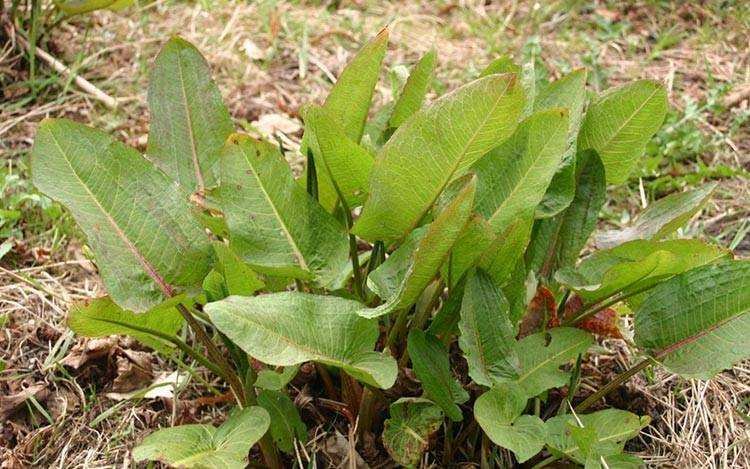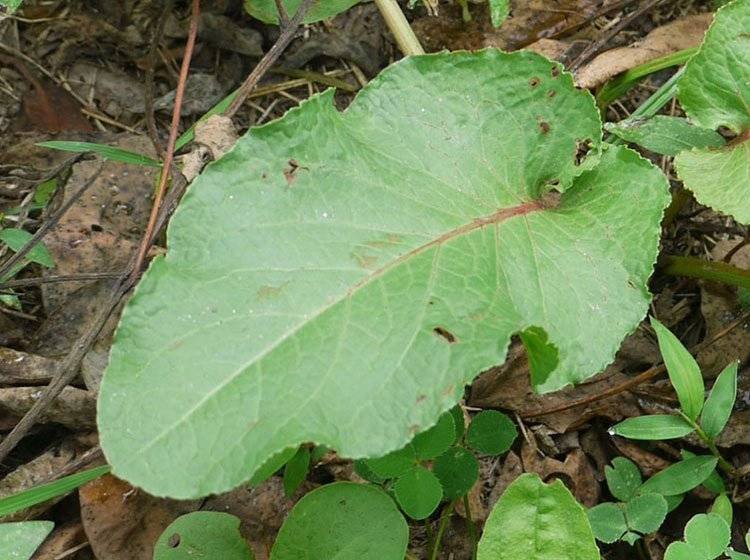Beautiful Plants For Your Interior
Bitter Dock Weed

Shape: Large, flat green long red stalked oval-shaped, leaves growing from a central basal rosette. ‘Spiky’ distinctive seed heads are plentiful. Flowers are abundant brownish/green in colour
Colour: Green plant/leaves
Family: Polygonaceae Genus: Rumex spp
Main Species: Bitter Dock (Rumex obtusifolius)
Other Names: Broad-leaved-Dock, Dock Leaf, Butter Dock and Bluntleaf Dock
Most Active Growing: March – September
Weed Type: Perennial
Bitter Dock Weed Identification
From the same family as Japanese Knotweed, (Polygonaceae) Bitter Dock Weed (Rumex obtusifolius) is a perennial herbaceous plant and a fairly common sight in the UK. Although it is native to Europe, it is found in most temperate continents.
Generally found in moist recently disturbed soils, roads sides and of course gardens, Bitter Dock Weed is a highly invasive species in some locations, due in no small part to the plant’s prolific seed dispersal.
Bitter Dock Weed is a plant with a basal rosette of long-stalked, smooth ovate-oblong leaves and rounded tips; stems tend to be around 32in-3¼ft (80 cm-1m) high. You will see red stems on some lower leaves if this plant is seeding. The edges of this plant’s leaves are slightly wavy, and the top is hairless.
Flowers gather in ‘whorls’ at the top of the plant, and each branch has ten to twenty-five light green to pinkish/brown flowers.
If this plant is seeding, close examination will reveal that the seeds have sharp points or spines on their fruit wings’ edges. The distinctive seed heads are on spikes that persist into winter. The Bitter Dock is not pollinated by bees but is ‘wind-pollinated or anemophily.

Bitter Dock Weed (Rumex obtusifolius) Showing The ‘Spiked’ Seed Heads
Be Wary Of Bitter Dock Weed Seeds
The problem with Bitter Docks as with most weeds is how to carefully remove them without spreading them. Docks have a long, up to 3ft (0.91 m) thick, branched ‘tap root’ that can ‘regrow’ even from the top section if it is damaged.
As mentioned earlier, seeds are also produced in abundance, and they will germinate on the surface of the soil if left there. They can survive in the soil in excess of 40 years if left there.
Dock seeds are frequently distributed in manure; however, composted manure, municipal compost, and other soil improvers should be free of them if bought from reputable sources. Broad-leaved dock (Rumex obtusifolius) is covered by the Weeds Act 1959, which specifies five noxious weeds (including the Bitter Dock Weed / Broad-Leafed Dock Weed).
How to Get Rid of Bitter Dock Weeds
Natural Control
Many species of weeds can be controlled without resorting to weedkillers.
Natural or organic control measures rely on killing or restricting the weeds by physical actions. These control methods include methods such as manual removal with a garden fork or similar, (not a trowel due to the ‘long tap root’), smothering (stopping the plants from receiving light) or even burning. Docks can often be controlled using these methods.
If a large portion of the roots can be removed from ‘Bitter Docks’ the roots will more than likely not regrow. Docks are especially vulnerable in the spring, so they should be removed then.
Chemical Control
There are several chemical methods of control, depending on where you may find a bitter dock problem. If the issue appears in a lawn then, spraying with a selective lawn weedkiller based on 2,4-D or MCPA can be used. Something like Vitax LawnClear 2 or Weedol Lawn Weedkiller may be your best option. It is typically the case though that docks become fairly resistant to these ‘weedkillers’ once they have established a fleshy rootstock.
In late summer, before seed formation, treat problem lawns with a broadleaf weed killer. Then, 14 days after cutting back the leaves, re-spray them to prevent regrowth.
Should you find your Dock issue arising on rough grassland, it is advisable to make use of a ‘selective herbicide’ containing triclopyr (such as SBK Brushwood Killer) in order to avoid damaging the grass.
This herbicide is systemic, travelling from the weed leaf down into the root system, but it will damage any other broad-leaved plants (for example, wildflowers). Therefore, it should only be used in grass where such actions are acceptable if non-selective.
Of course, docks are more effectively treated with glyphosate starting in mid-summer as the height of their growing season. However, if any of the sprays come into contact with grass or other plants around the docks, they would be killed or severely restricted.
In borders, sprays may be used to target individual weeds more precisely with ready-to-use formulations. Applications should begin in early June and continue through mid-August to achieve the greatest effect. This plant however is so tenacious that multiple applications may be necessary.
NB: However, it’s important to follow the instructions on the manufacturer’s packaging when using glyphosate-based products.
For more information on weedkillers for gardeners, download this free pdf document available to gardeners; see sections 1a, b and 4 in particular as they refer to the applications above.
Bitter Dock Weed: How to Remove Organically
Bitter Dock Weed – Medicinal Uses
Bitter Docks often grow near stinging nettle plants and are widely known for their ability to soothe stings. However, herbal medicine practitioners have been aware of the dock’s therapeutic value for many hundreds of years. Modern-day scientific research has even corroborated some practices of the traditional herbal medical practitioner in many regards.
Cooling properties of docks were also utilised to soothe insect bites and wounds, as well as burns, blisters, and sprains.
The dock leaves juice, in addition to stopping ‘blood loss’ or purifying the blood, may be used as a compress to cure bruises. Even coughs, colds, and bronchitis can be treated with bitter dock tea. Other treatments include jaundice, liver disease, skin problems, boils, rheumatism, constipation, and diarrhoea.
Can You Eat Bitter Dock?
The answer is yes. Wild dock is popular in salads in the United Kingdom, natural food foragers who collect ‘Bitter Dock Weeds’ or ‘Bitter Dock’ say they have a rather ‘tart’ taste like sour lemons; but this makes them useful in the kitchen.
The leaves are high in ‘oxalic acid’, which is the same compound as spinach. Younger plants are frequently considered to make the most tasty ‘spinach’, although others believe that the taste is a little ‘sour’.
You can however serve up these ‘greens’ with butter, bacon, hard-boiled eggs, and seasoning all make a tasty meal with these greens. Dock leaves like vine leaves may also be stuffed with a rice, meat, herbs, and cheese mixture.
Dried leaves may be used as a seasoning for rice, potatoes, seafood, or sandwich fillings. In addition, these fruits and seeds may also be boiled to make a mush or ground and mixed with flour or meal to make bread, muffins, and gravies. Young stemmed plants may be chopped, simmered, and sweetened with honey as an alternative to rhubarb in a pie.
Docks contain more vitamin C than oranges and more vitamin A than carrots. Vitamins B1 and B2, as well as iron, are also present in high quantities.

Bitter Dock Weed Leaves Can Be Used in Salads Or Stuffed Like Vine Leaves
FAQs
What Is The Best Time To Control Bitter Dock Weed?
The best time to control bitter dock weed is in the spring when the plant is actively growing and before it has gone to seed. At this time, the plant is more susceptible to herbicides and can be easily removed by hand or with a hoe.
However, if the plant has already gone to seed, it is important to remove the seed heads before attempting to control the plant, as this will prevent the spread of seeds and the formation of new plants.
Is Bitter Dock Poisonous to Cats And Dogs?
It would seem that the consensus of medical veterinary opinion is yes, Bitter Dock is poisonous to cats and dogs if ingested, particularly in larger quantities.
You should seek medical veterinary advice as soon as possible if you think your pets have swallowed any parts of this toxic plant.
As pet owners, we have to be extremely careful and try to avoid where possible our beloved pets from ingesting any garden toxic plants that may put them in harm’s way.
Bitter Dock Recipes
Yes, you can certainly cook with bitter dock leaves. You can use dock leaves in any recipe where you would normally use spinach, collards, or other dark, leafy greens. The young leaves are the finest when they are still tender.
Wild food recipes are becoming ever more popular in the UK. One of the favourite Dock recipes is Stuffed Dock Leaves.
Conclusion
Perennial Bitter Dock Weeds are found in their native Europe but are also found in many other continents around the world. It is an invasive species and difficult to remove like many weeds when they have taken root; due to its long and difficult tap roots and prolific seed dispersal.
Bitter dock weeds are easily identifiable, so immediate action will be required to remove them should you want to. They are not all bad, as they do have some medicinal properties it is said (think of sting nettles as a child) and can be used in various cooking recipes.
Disclaimer: The contents of this article were for educational and gardening purposes only. Before using or ingesting ANY herb or plant for medicinal purposes or otherwise, please consult a physician, medical herbalist or other suitable professionals for advice.
Return to Garden Weeds
